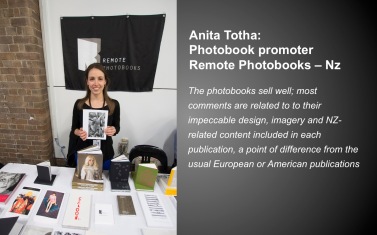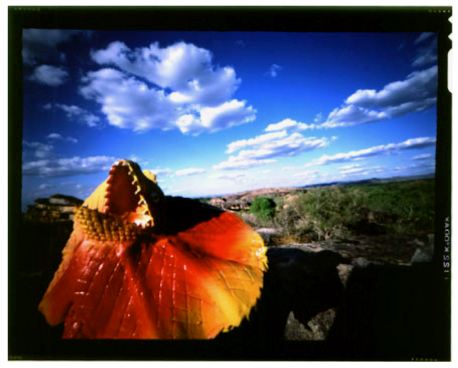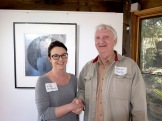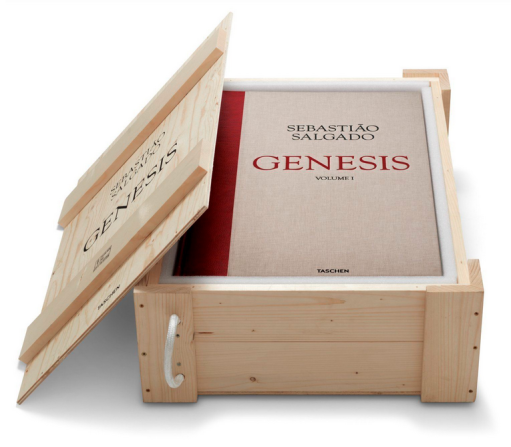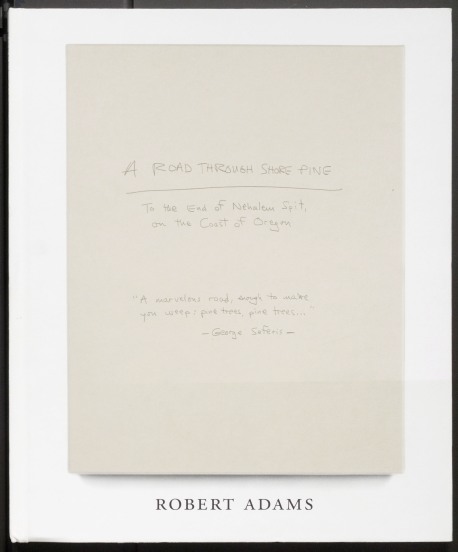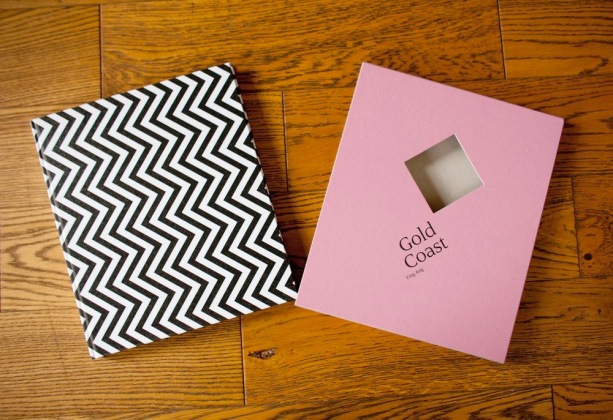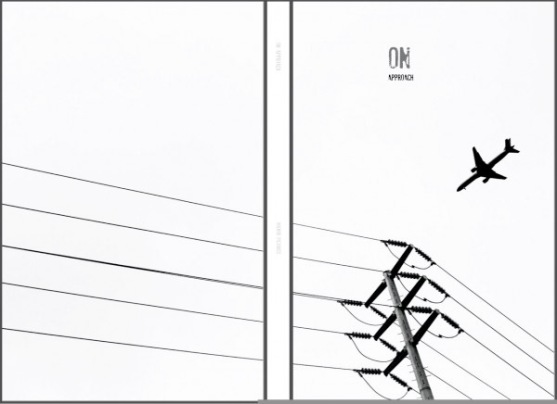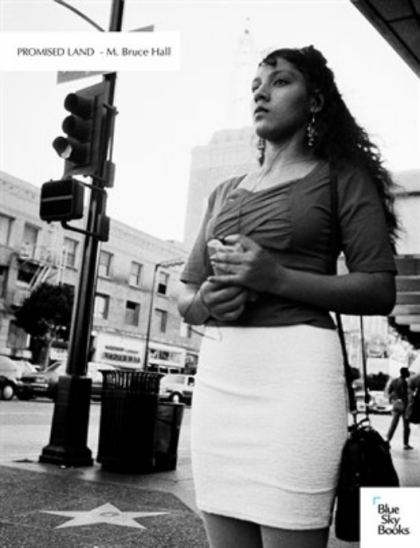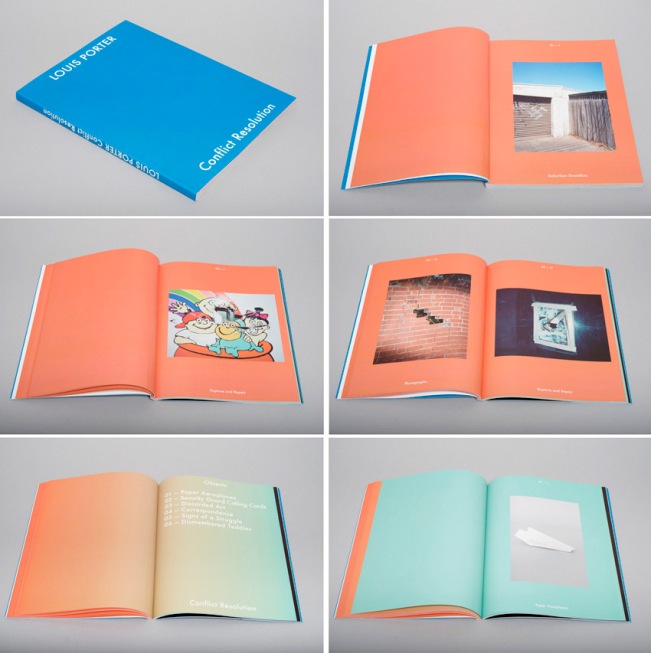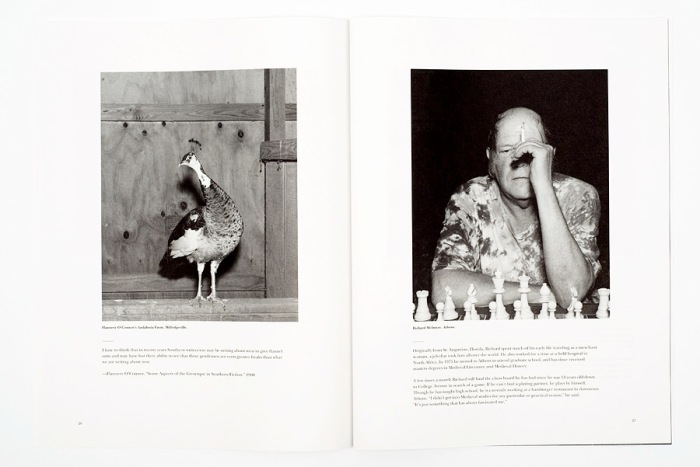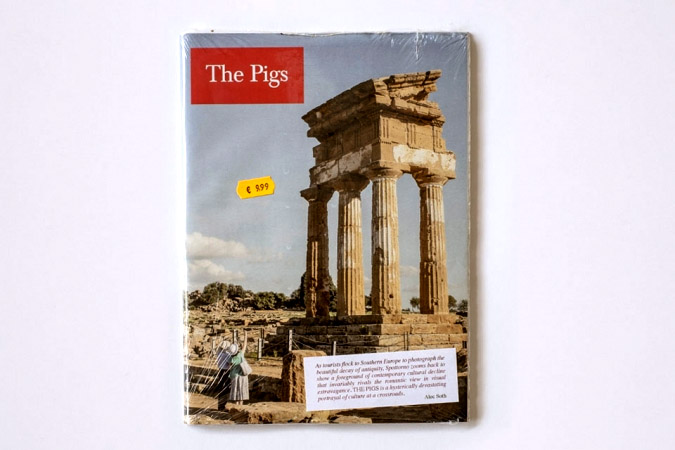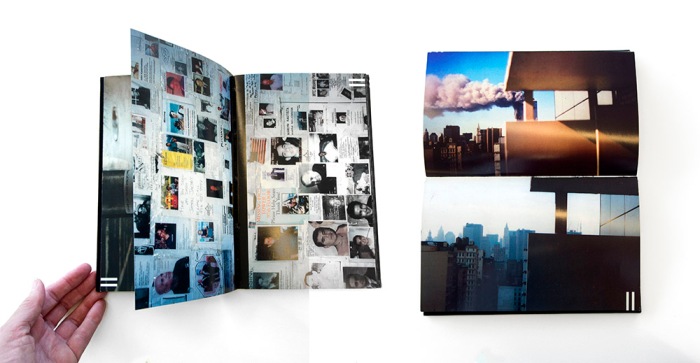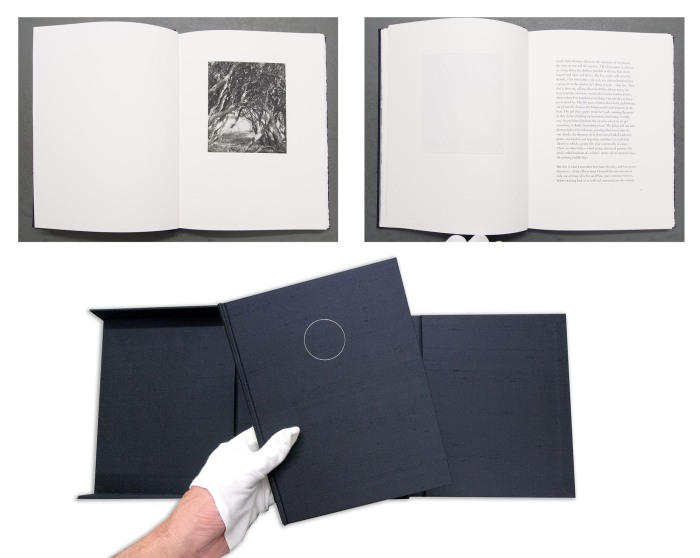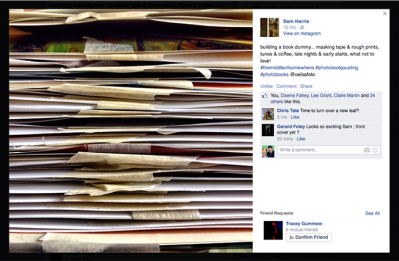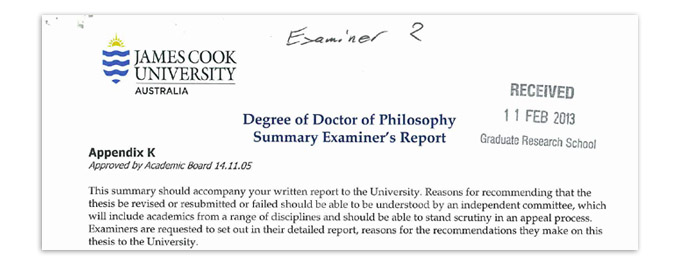Archive for the ‘PhD Study’ Category
ARTISTS FACING STUDIO CLOSURE: QCA vs Griffith University
Over the last month there have been reports coming out of the Queensland College of Art about proposed changes being instigated by the hosting institution Griffith University. The University’s intentions are outlined in the University’s ‘Proposal for Workplace Change Roadmap to Sustainability *’.
*If link is broken Download a copy of the Proposal for Workplace Change Roadmap to Sustainability ‘ GU-QCA-Proposal-for-Workplace-Change-Roadmap-to-Sustainability_students
.
Outcry from a cross-section of the Arts community has been forthcoming. This has included Arts academics, current and past students, staff and colleagues, Arts organisations like Occuli, NAVA, Brisbane Visual Arts Advocacy Group, Artisan and The Print Council of Australia, Arts Agencies and other supporting groups.
.
.AS ALUMNI WE WANT TO SUPPORT THE QCA
So we composed the following letter to the Griffith University’s Vice Chancellor:
Dear Griffith University Vice Chancellor Professor Carolyn Evans,
By now you will have received a significant number of responses relating to the proposed changes to the Queensland College of Art.
I have read many of the responses to these changes posted online and I concur with the concerns raised by many of the respondents. The Queensland College of Art has history, a solid reputation for the quality of its graduates and the possibility to contribute significantly to the ongoing record of the life of human and non-human habitation on this planet.
Imagine for a moment if you can your world without the framed artwork on the wall – what it’s like to witness the vibe of the well attended gallery, the encounter of a sculpture in a public space, and the wonder of the fleeting image on Instagram. All of these are created by artists – the very people who will be affected by the changes you are intending to implement.
I understand the contemporary funding pressures created by the Pandemic and government indifference to the need to financially support academic study and research into the broader aspects of human existence.
However there is a necessity to be careful that rapid submission to comply, with what may be short-term influences, will have implications. Not just within the fine arts discipline but also, as the artist tells the stories of their times, fewer qualified practitioners will culminate in a gap in the creative record of human existence.
I urge Griffith University to reconsider what has been proposed and find a space to allow art and artists to be nurtured within the Griffith University academic programs.
I also wish you to consider that while many other universities may be considering a similar course of action in cutting Fine arts programs Griffith University has an opportunity to stand firm and continue the Queensland College of Art and realise the benefits identified in the vision and dreams that the supporters of the SAVE our STUDIOS have.
The studio is the crucible that provides the catalyst and engine room for the creative thought…
Sincerely,
Dr Doug Spowart M.Photog, FAIPP, HonFAIPP Dr Victoria Cooper M.Photog, HonFAIPP
Graduate: College of Art Brisbane 1972 Graduate: Queensland College of Art Brisbane 1993
A RESPONSE TO THE EMAIL WAS RECEIVED LATER IN THE DAY …
.
.
STUDENT PROTESTS AND MEDIA REPORTS HAVE BEEN SUCCESSFUL IN GENERATING COMMUNITY AWARENESS
.
.
An ABC TV REPORT HERE
AND
An ABC RADIO INTERVIEW HERE
(interview begins at around 1:42:45 and runs for 15 mins)
.
A PETITION
At the time of posting the SAVE OUR STUDIOS Petition had received 10.6K signatures
– You can add your support by signing the petition here: http://chng.it/Zv22YbfP6y
.
FOR MORE INFORMATION ABOUT THE QCA SOS PROTEST VISIT:
https://www.facebook.com/groups/teamqcasos
.
AUSTRALIAN NATIONAL UNIVERSITY and the School of Art and Design
It’s interesting to note that at this time the Australian National University is doing the same for their Art programs with their demand being “…the long-standing structural deficit of the School cannot continue and must be addressed. The School must position itself tobe able to deliver its programs and research with continued excellence but in a financially viable and sustainable manner.”
READ MORE HERE: https://www.anu.edu.au/files/guidance/Managing%20Change%20Proposal_CASS_Tranche%202_November%202020_.pdf?
If link is broken Download a copy HERE ANU-Managing Change Proposal_CASS_Tranche 2_November 2020_
.
.
.
.
A Spectrum: Photobook to Artists’ Book
About 4 years ago during post doctoral research I was involved with at the State Library of Queensland as a Siganto Foundation Research Fellow. I submitted a paper concept to a call-out for contributions to a major book on photobooks being prepared by a significant contributor to the international photobook discipline at that time. Unfortunately the publishing project was never realised and the essay did not enter the critical discourse on photobooks.
Recently there has been much discussion about terminologies in photobooks and some aspects of the artists’ book are beginning to blur. I passed the paper on to a UK PhD candidate who found interest in the discussion that I raised and suggested that I self-publish the essay.
So here it is…
.
. A Photo Spectrum: Photobook to Artists’ Book
.. [DRAFT@January 21, 2015]
The contemporary popularization of the ‘photobook’ is arguably attributed to the three published commentaries that have become seminal texts on the subject, the first of which: The Photobook: A History Volume I was released in 2004 by photographer and photobook maker Martin Parr, and photo historian Gerry Badger. Commentator and photographer Tim McLaughlin observes: ‘The term “photobook” which never really existed before Parr and Badger (most dictionaries still do not recognize it), would, within a few years, come to identify a growing industry…’(McLaughlin 2013). Interest in the photobook has never been greater. Digital technologies have emancipated photography and book publishing and now anyone can take photos and make their own photobooks. Accompanying this publishing revolution are awards, ‘books of the year’ lists, catalogues, and an auction market. Specialist online and bricks-and-mortar bookshops now service an ever-increasing buying and collector market.
Although photobook publications have aesthetic definitions for what a photobook is, the term has a lot of ground to cover. Photography writer and teacher David Campany recently noted in Aperture’s Photobook Review that: ‘The compound noun ‘photobook’ is a nifty little invention, designed to turn an infinite field (books with photographs in them) into something much more definable’(Campany 2014). But while the ‘infinite field’ may be ‘easily defined’ the term photobook can only serve as a generalised umbrella for the plethora of photobook products that shelter under it.
The definition of photobook today could include a roughly printed or photocopied zine-like object created by a child, to a blatantly over-designed limited edition book. In between these bookends lies a range of products: Print-on-demand and hand-made unique state, small editions, self-published or bespoke books, ephemeral items, newspapers, pamphlets and zines. Although many of these published forms may not have the universal distribution and commercial opportunities afforded a trade published book, they are, none the less, part of the broad practice of the contemporary photobook. Additionally many of these books occupy much of the emergent contemporary scene and tend to be overlooked as the critical discussion is usually focussed on the photobook exemplars from the past.
The boundaries of the photobook discipline are blurred by their intersection with a variety of other book genres including the expansive mediums of artists’ books and zines. As independent publishers of books, artists have for over 100 years communicated their ideas and stories using their chosen media in book form. Artists have embraced photography and the various forms of photography from found collaged photos, to screen-printing, photo etching and gravure, as well as actual silver gelatin, type C, inkjet or laser prints in their artists’ book works. Anne Thurmann-Jayes commented in the catalogue for ars photographica, an exhibition about artists and photographers and their photobooks, that: ‘In very general terms, it is possible to say that half of all artists’ books produced to date have been based on photographs’ (Thurmann-Jajes 2002:19). For that reason any discussion of the photobook needs to consider a broader range of contributors to the discipline as well as other forms of the book where photographs act as carrier of the visual communiqué.
In her essay Thurmann-Jajes also comments on the differences that she felt existed between the artist and the photographer in conceptual aspects of making a photobook. She states that:
The authors of photo books followed photographic tradition, according to which the photograph as such was decisive, becoming the bearer of meaning… By contrast to the photo book, the artists’ book is not the bearer, but the medium of the artistic message. (Thurmann-Jajes 2002:20)
In highlighting the differences in the way the photograph is used and considered by these two groups, Thurman-Jajes has identified a division may have always existed between the photographer and the artist using photography. Yet making books with the photograph as a ‘bearer of meaning’ or ‘message’ should not belong to any particular practitioner. If the photograph is therefore a universal and an open medium for all book makers then any questioning on what is and what can be a photobook requires consideration that embraces this diversity.
To ensure that the photobook remains vibrant and relevant, a flexible space for discourse and critique needs to be created that is inclusive of the broad range of authors and book forms in this medium. In 1998 artists’ book librarian, collector and curator Clive Phillpot suggested a metaphor for the artists’ book discipline as being ‘white light’ and the individual colors that made up white light as being the ‘many categories of the spectrum’ representing the broad nature of the practice. In this essay Phillpot’s ‘white light’ metaphor is now applied to the range of published forms that employ or contain photographs beyond that of the artists’ book. (Phillpot 1998:38)
Through an extension of Phillpot’s prism, this essay will propose a grouping of the various forms of the book from photobook through zines to artists’ books and their salient characteristics using individual colors (wavelengths of light). As the visible light spectrum has a rainbow of seven visible colors this proposition has seven as well. Although two additional ‘colors’, familiar to photographers, that of infrared and ultra-violet, have been added to recognise specific aspects of photography publishing at the extreme ends of the range. Each color and book form has specific characteristics and identifiers associated with it – it is recognized that many books may challenge attempts to place them within just one color in this spectrum.
The transition from the infrared to ultra-violet intentionally locates those books conceived and produced by photographers at the warmer end of the spectrum. Book forms in the cooler end of the spectrum would be principally books made by artists using photography. Placement within this spectral framework may create some interesting challenges including the divisions of ‘artist’ and ‘photographer’, and how practitioners describe themselves and their creative products.
The 9 colors and their identifiers are:
Infrared – The Deluxe Photobook
- A book of monumental proportions approaching what bibliographers and librarians call ‘double elephant’ (up to 78cm tall for Helmut Newton’s Sumo);
- Usually consists of a monograph styled ‘best of’, or, of a tightly thematic subject matter by a particular photographer;
- Are limited editions, expensive to buy and have limited markets that center on private collectors and institutions; and
- Are usually commissioned by a small number of specialist art publishing houses as opulent objects of art, design and packaging.
An exemplar:
Genesis
Sebastião Salgado, Taschen, Hardcover, 2 vols, with bookstand, 18.4 x 27.6 in., 704 pages, £ 2,500. https://www.taschen.com/pages/en/catalogue/photography/all/02613/facts.sebastio_salgado_genesis.htm
Viewed: April 6, 2018
Red – The ‘Classic trade’ Photobook
A book form in the tradition of Walker Evans’ American Photographs (1938), William Eggleston Eggleston’s Guide (1976), Robert Frank’s The Americans (1959), and John Gossage’s The Pond (1985). Characteristics of these books may include;
- A single photograph per opening, the facing page blank and may sometimes contain a title or caption;
- Sometimes it is a book co-published with an exhibition of the same title;
- Simulation of the gallery experience of viewing photographs and therefore is sometimes referred to as an ‘exhibition in a book’;
- Images in these books are carefully and purposefully sequenced to carry the narrative intended by the author; and
- An essay relating to the work by the photographer, curator or writer often accompanies this book form – occasionally the essay may be of an obtuse content.
An exemplar:
A Road Through Shore Pine
Photographs by Robert Adams. Fraenkel Gallery, 2014. 42 pp., illustrated throughout, 9¾x11¾”. http://www.photoeye.com/bookstore/citation.cfm?Catalog=DS364
Orange – Design Photobook (collaboration)
The authors of this form consider that photobooks are an experience that can be enhanced by the influence of creative graphic design that may include:
- Usually is a collaboration between the photographer and a designer so as to transform the photographs into a strident work of visual communication;
- The presentation of photographs over double pages, or being montaged, or printed full-bleed as well as being scaled variably;
- Inventive typography and layout design enhancements;
- High quality book production, printing, finishing and packaging; and
- A differentiation from other photobooks by the inventiveness of the design features and the surprise that is encountered by the reader in engaging with the physicality of the book and how it operates as a communicative device.
Exemplars:
Gold Coast, photography by Ying Ang, co-designed with Teun Van Der Heijden
Self-Published, 2014. 132 pp., 72 color illustrations, 9½x11¼”.
http://yingangphoto.com/page.cfm?id=34&subid=121
Iris Garden, photography by William Gedney and designed by Hans Seeger
63 pages plus insert, 6.75 x 9.5 in. Heavy softcover with wraps & slipcase,
Little Brown Mushroom, 2013, in an edition of 1,000.
http://www.littlebrownmushroom.com/products/iris-garden/
Yellow – POD Photobook
- These books are usually self-published;
- They may emulate bookstore trade books from simple booklets to grand coffee table tomes;
- They can be produced by anyone with minimal photography and computer skills and just require access to online photobook-service providers;
- Single book or multiple copies can be made;
- Affordable pricing considering the sophistication of the product;
- POD services generally utilize templates for ease of use by clients of limited skill;
- POD books may have designer input, but due to the limited range of options for special finishing or designed-in features; and
- Many POD book users create book ‘dummies’ that may lead to a more trade-based publication at a later stage.
For exemplars see works offered in the photography category of http://www.Blurb.com.
On Approach by Daniel Milnor, BLURB Book, 13x20cm, 26 pgs
http://www.photoeye.com/bookstore/citation.cfm?Catalog=ze462
http://www.smogranch.com/2012/09/26/cleveland-musuem-of-art-diy-photobooks/
Promised land by M Bruce Hall, Blue Sky Books/MagCloud. Standard 8.25″ x 10.75″. 56 pages, perfect-bound.
http://www.magcloud.com/browse/issue/815317
Green – Emergent – PhotoStream* [of Consciousness], Photozine*or Insta-photobook*, Imagistbooks*
This aspect of photobook publishing is occupied by a large number of DIY practitioners accessing a range of print technologies from desktop inkjet and laser printers to affordable digital press printing and binding technologies. Content of these books could be considered a visual form of imagist or concrete poetry – they exhibit and subject and assembly sensibility that could match ‘stream of consciousness’ approaches to art. Other aspects include:
- Usually self-authored or collaborative publications;
- Are made in limited numbers/editions, often hand sewn or stapled;
- The books are sold through specialist popular culture bookshops or online;
- Often these books may be the result of crowd sourced funding and may be derived from online image storage or social media platforms like Instagram; and
- Their locale of popularity and distribution may be regional.
*Names considered to best describe these emergent forms
Exemplar:
Conflict Resolution by Louis Porter, published by Twenty Shelves (Melbourne/Australia), 164 Pages full color, Design by Pierre Hourquet, Section sewn paperback with de-bossed cover, 20 x 27 cm, Edition of 1000.
http://louisporter.com/twenty-shelves/
Blue – Photopapers* Photomag* (broadsheet / newspaper / magazine)
These emergent photobooks take their physical form and production values from conventional print media. Other aspects include:
- Availability through POD service providers;
- Print runs may be small and limited or quite extensive of 1,000 copies or more;
- These works may parody existing newspaper or magazine titles as a form of activism or commentary on print media and society; and
- They may provide a photographer with a larger-scale publication format at a low production cost.
*Names considered to best describe these emergent forms
Exemplars: Photopaper
LBM Dispatch #7: Georgia photography by Alec Soth and Brad Zellar, designed by Meredith Oberg
Little Brown Mushroom, Publication Date, November, 2014
48 pages 11.25 inches x 15 inches, 50 lb newsprint paper, Edition of 2000
http://www.littlebrownmushroom.com/products/lbm-dispatch-7-georgia/
Exemplar: Photomag
PIGS
Photography by Carlos Spottorno, designed by Carlos Spottorno and Jaime Narváez based on a replica of The Economist magazine.
Published by: RM Verlag and Phree, Madrid, 2013
112 pages 27 x 19 cm
http://spottorno.com/web/pigs
Indigo – Innovative Artists’ Book
This genre of the book is based around the idea of the artist as author, publisher and maker, and forms of the book that represent innovation, creativity and exploration of the book form. Historically this book form has been the domain of the artist and the way photography finds its way into the book can be more about the photo as a record, a fact or a trace representing the world and society that created it. Rather than something representing the passion that photographers have for the photograph as the product of their special visual perception of the world. Characteristics of these books include;
- Forms integral to the narrative expression and the artist will break rules and conventions to achieve their expectations for the book;
- Books engineered in ways that demand interaction, both through the visual senses but also through the haptics of handling and reading – the turning of pages;
- Books that may mix photographs and text or text over photographs, or text as photographs and photographs as text;
- Multi-media productions where the photograph becomes a part of a larger interplay of media; and
- Bespoke unique state or a work that is published as a limited edition.
It should be noted that the artists’ book discipline might encompass an equally diverse range of book forms
Artists’ Book exemplar:
Eleven, Marshall Weber 1960- ; Christopher Wilde; Sara Parkel; Alison E Williams; Isabelle Weber; Booklyn Artists Alliance. New York : Booklyn :c2002
http://www.booklyn.org/artists/Marshall%20Weber.php
Violet – ‘Artists’ Book’ Codex
Related to books that utilize the conventional codex form and may explore the narrative form, conceptual art ideas as well as artmaking techniques. These books may exhibit the following characteristics:
- Codex book form;
- A range of production values including artisan printers and binders;
- Contain texts as well as graphic elements and photographs; and
- Printing techniques such as silkscreen, photoetching and gravure, inkjet, digital press and alternative imaging techniques like cyanotype.
An exemplar:
Google vanitas : autobiography # 7 concept and design by Scott McCarney.
16, [2] p. : col. ill. ; 22 x 20 cm.
http://scottmccarneyvisualbooks.com/Pages/google%20vanitas.html
Ultra-Violet – ‘Book Arts’, Livre d’Artiste Book
Consistent with the production and aesthetic values of the ‘fine press’ with the following characteristics:
- Texts are usually handset letterpress, photographs made by traditional photo etching or gravure techniques and binding and presentation in cloth and leather often with ‘book arts’ embellishments;
- The books are limited editions and utilize artisan practitioners and specialists in the production of the work;
- Often the book may be commissioned by an entrepreneurial publisher following the French tradition of the latter 19th century; and
- These works are expensive to buy and have limited markets that center on private collectors and institutions.
An exemplar:
Extinguishing of stars Carolyn Fraser and Holly Morrison
Idlewild Press, Cleveland, Ohio :2003. 61 p. : ill. ; 24 cm., in case 26 x 20 x 4 cm. Edition of fifty.
https://thedesignfiles.net/2011/03/interview-and-studio-visit-carolyn-fraser-of-idlewind-press/
http://www.carolynfraser.com/wp-content/uploads/2011/11/Issue4_Uppercase_Fraser.pdf
In any attempt to define creative book publishing caution needs to be exercised. The artists’ book discipline has for years been dogged by attempts to define ‘what is, and what isn’t an artists’ book’. In 2005 Johanna Drucker put forward a proposal for classification of artists’ books. Even though she predicted that her proposition would ‘… cause strife, competition, [and] set up a hierarchy, make people feel they are either included or excluded’, (Drucker 2005:3) it inspired worldwide debate and furore from artists and librarians and became known as ‘Druckergate’. Ultimately the angst cooled and the artists’ book field continued with qualified debate, in both academic literature and everyday conversation, thus creating a basis for ongoing questioning and commentary on the discipline.
More recently, in 2010, Sarah Bodman and Tom Sowden from the Centre for Fine Print Research at the University of the West of England sought to define the canon for the artists’ book in the 21st century. They did this by creating a survey of world practitioners of bookmaking by artists in every conceivable outcome, including the emergent eBook. They found that the hierarchical form of a tree diagram was ‘too rigid and too concerned with process’ (Bodman and Sowdon 2010:5). They discovered that their respondents wanted to alter the diagram to satisfy the, ‘cross-pollination that is often required by artists’ and added in, ‘connectors across, up and down to bring seemingly disparate disciplines together.’
Just as Bodman and Sowdon found from their research, this visual spectrum structure is open to challenge where practitioners and commentators are encouraged to mix and augment new color palettes for the presence of the photograph within the book. So what is proposed is not a rigid structure, deeply rooted and immovable as in the tree trunk, branch and leaf, but rather one where books of similar characteristics can be grouped, blended and mixed.
The intention for this nomenclature is to bring visibility to the diversity of creative publishing forms using the photograph. It is offered as a potential tool that recognises this evolving and extended medium to: curators, judges, cataloguers preparing ‘the best books of the year’ lists and books for sale or auction, and commentators engaging in critical debate. Additionally the links with artists’ books and zines can also be acknowledged thus extending and enriching the discipline of the photobook.
In the debate surrounding the evolving photobook this photo-specific spectrum analysis is offered, as a non-hierarchical, flexible and creative nomenclature. The spectrum should be able to move with change and developments within the photo in the book and the ideas and the motivations behind those who create these communicative devices and their commentators and readers. Each constituent of the spectrum, although emanating its own ‘wavelength’ or ‘color’, forms a part of the “white light” that is the continuum of the photograph and its place in the book.
Dr Doug Spowart[1]
January 2015
.
Bodman, S. and T. Sowdon (2010). A Manifesto for the Book: What will be the canon for the artist’s book in the 21st Century? T. S. Sarah Bodman. Bristol, England, Impact Press, The Centre for Fine Print Research, University of the West of England, Bristol.
Campany, D. (2014). “The ‘Photobook’: What’s in a name?” Aperture: The Photobook Review(#007).
Drucker, J. (2005). “Critical Issues / Exemplary Works.” The Bonefolder: An e-journal for the bookbinder and book artist 1(2): 3-15.
McLaughlin, T. (2013). “Classic – The Photobook: A History Vol 1.” Retrieved 17 June 2014, 2014, from http://imageonpaper.com/2013/05/17/131/.
Phillpot, C. (1998). Books by artists and books as art. Artist/Author: Contemporary Artists’ Books. C. Lauf and C. Phillpot. New York, D.A.P./Distributed Art Publications Inc.
Thurmann-Jajes, A. (2002). ars photographica: Fotografie und Künstlerbücher. Weserburg, Bremen, Neues Museum
[1] This essay is informed by an ongoing and long term personal interest which involved a practice of making, observing and considering the position of photographs published in the creative book realm along with recent research into the intersection of photobooks, zines and artists’ books.
.
TEXT © Doug Spowart 2018
Most of the images in this post are from the promotional websites for the books and some are by the author – copyright resides with the authors and the images here are used for the purpose of review and commentary. Source links are provided for the reader’s connection with the publication under discussion.
.
.
.
.
.
Cafe Scientifique: The Secret Life of Water – Vicky Speaks
.
.
.
Victoria Cooper
I Have Witnessed A Strange River says Cooper invited us to engage with a journey through the depths of water. She guided us through an unfamiliar place inter-twined with our daily lives where we witnessed the relentless cycle of life and death. Deep below the water’s reflecting surface, she showed us that a place primordial and alien yet intrinsic to us all, exists.
A SEGMENT OF VICKY’S PRESENTATION IS VIEWABLE HERE as a video
.
.’
BIO: Victoria Cooper is an artist with a PhD in Visual Arts researching the intersections of art and science. This interdisciplinary research is informed and inspired by her previous career in Human and Plant Pathology along with current interest in local and regional issues of land and water. During her 23-year arts career she has also worked across many forms of photographic technology–analogue to digital imaging; site specific documentation of performance; and artists’ books. In a collaborative practice with Dr Doug Spowart, she explores the post technological paradigm of photography as a cultural communication and a site-specific visual medium. This multi-methodological approach is applied in their current Place Project work in many regional communities. Cooper has exhibited in Australia and internationally and her work has been published in the Pinhole Resource Journal, the Le Stenope issue of French Photo Poche series and with Doug was included in the publication LOOK, Contemporary Australian Photography since 1980. Cooper’s artists’ books are held in national and private collections including the rare books and manuscript collections of the National Library of Australia and the State Library of Queensland.
.
.
Carl Mitchell
This is a Story About Water Too* The quality and supply of water is one of most important issues of our time. Water quality scientist Carl Mitchell from the Condamine Alliance discussed the quality of water in our waterways and the health of our aquatic systems – vital indicators of how well we are doing as a society. The waterways in the Condamine catchment are a precious resource for the communities in the region. They provide many benefits to support the economy, society and environment of the region. Due to extensive development across a number of sectors, the quality of waters in most of the catchment areas is poor. Studies and models predict that without appropriate additional management responses the region will be unable to meet the social and economic needs of the community while maintaining the ecological integrity of the natural systems supporting these needs. Carl discussed the state of the waters and what actions are needed in the future.
BIO: Carl is a water quality scientist, aquatic ecologist and integrated water resource management specialist with a passion for the water and the waterways of the Condamine Catchment in the headwaters of the Murray Darling Basin. Carl strongly believes that the quality of water in our waterways and the health of our aquatic systems is an indicator of how well we are doing as a society. This drives him to strive for clean water for the Condamine and healthy aquatic ecosystems for the Murray Darling headwaters. Carl’s work in the Condamine has focussed on restoring the iconic Condamine river and Carl has lead the team that won 3 prestigious national awards for the Condamine in 2012-2013. Carl has a history in Natural Resource Management in Queensland having worked for Reef Catchments in Mackay for 11 years as Waterwatch coordinator, Healthy Waterways Coordinator and Water Manager. In the Water Manager role at Reef Catchments Carl spent 2 years coordinating the Paddock to Reef program across the 6 reef regional bodies, before moving to the Condamine in 2011. Carl has been an Australian Youth Ambassador for Development in the Philippines, implementing Waterwatch and Landcare programs.
.
.
Igneous: James Cunningham and Suzon Fuks
The Igneous team shared its explorations of water as a topic and metaphor. They explained how Waterwheel is an interactive, collaborative platform for sharing media and ideas, performance and presentation. Attendees witnessed how Waterwheel investigates and celebrates this constant yet volatile global resource, fundamental element, environmental issue, political dilemma, universal theme and symbol of life. We were encouraged to explore and discover, share and collaborate, contribute and participate in their project and local activities.
Igneous presented Waterwheel as well as the FLUIDATA project supported by Arts Queensland, and introduced the audience to FLUIDATA workshop that we offered there.
BIOS: Igneous received funding from Brisbane City Council and Arts Queensland towards the development of the platform and it’s incorporation in the Waterwheel Installation Performance and associated residency at the Judith Wright Centre of Performing Arts, Brisbane. Igneous is a partnership between Cunningham and Fuks who have both given lectures, workshops, master-classes and labs in Australia, USA, Europe, India and Indonesia, in tertiary institutions, cultural venues and community contexts.
James Cunningham is a performance, movement and video artist, and the co-Artistic Director, along with Suzon Fuks, of Igneous Inc., (www.igneous.org.au) a Brisbane-based multimedia and performance company established in 1997 that has presented solo and ensemble stage shows, performance-installations, video-dance works and networked/online performances in Australia, Europe (Belgium, France, Switzerland, Germany, Poland), UK, Canada and India.
Suzon Fuks is an intermedia artist, choreographer and director, exploring the integration and interaction of the body and moving image through performance, screen, installation and online work (http://suzonfuks.net). During an Australia Council for the Arts Fellowship (2009-12), she initiated and co-founded Waterwheel, following which she has been a Copeland Fellow and an Associate Researcher at the Five Colleges in Massachusetts, continuing to focus her research on water and gender issues, and networked performance, as well as coordinating activities on Waterwheel.
* The Secret Life of Water Book Title by Masaru Emoto
* This is a Story About Water Too. Poem Title by Jayne Fenton Keane
Texts sourced from Dogwood Crossing material. Photos: Doug Spowart ©2014
.
.
hEADoN into THE FUTURE OF PHOTOBOOK PUBLISHING
.
RUNSHEET & OVERVIEW:
Momento Pro/HEADON Event: The Future of Photo Book Publishing
.
6.00 pm Panellists arrive on stage
6.10 pm Doug Spowart: Welcome and good evening.
Photographers and those who make photobooks are storytellers – and – with this in mind – I would like to acknowledge and pay respect to the traditional owners and story-tellers of this land on which we meet; the Gadigal people of the Eora Nation.
This evening we will discuss the photobook and consider the opportunities for its future in Australia.
My name is Doug Spowart, I make artists books, photobooks and I have a research interest in photography and the form of the photobook.
This evening I’m joined by an eminent panel of book people with a wide range of knowledge and expertise on the topic.
The order of this evening will begin with an overview by me about the photobook. Then each of the panellists will discuss their involvement within the book and photobook world. Following that the panel will be presented with a range of questions – some sent in from attendees. Towards the end of the forum we have set aside time for your questions and comments to the panel. The forum will close and be followed by refreshments and networking opportunities …
At this juncture I would like to thank our Sponsor Momento Pro and the Organizers of the HeadOn Photo Festival, and the Museum of Sydney for this opportunity to engage in dialogue about this growing and evolving medium …
.
AN OVERVIEW OF THE PHOTOBOOK
.
Photobook luminary Martin Parr states:
… that photography and the book were just meant for each other; they always have been. It’s the perfect medium for photography: it’s printed, it’s reproducible and it travels well. (Parr in Lane 2006:15)
The photobook is indeed the ‘perfect medium’ for photography and its history, the history of photography are inextricably linked with that of publishing. In fact some of the earliest experiments in photography made by Hércules Florence (1804 -1879), Nicéphore Niépce (1765 -1833) and Henry Fox Talbot (1800 -1877) were to discover methods and processes that would enable the copying and printing of texts or designs by capturing and fixing camera obscura images.
![William Henry Fox Talbot, by John Moffat, 1864 By Michael Maggs [Public domain], via Wikimedia Commons](https://wotwedid.files.wordpress.com/2013/06/william_henry_fox_talbot_by_john_moffat_1864-by-michaelmaggs-public-domain-via-wikimedia-commons.jpg?w=336&h=425)
William Henry Fox Talbot, by John Moffat, 1864
By Michael Maggs [Public domain], via Wikimedia Commons
Books illustrated by photographs as a genre of the publishing industry flourished. The photographic image could operate as a storyteller, a precise document of truth, a device to entertain and, at times, a carrier of propaganda. Early photography book works consisted of travel, geographical and military expeditions, trade catalogues, scientific and ethnographic documentation.
Although some photographers, like Talbot, may have established their own publishing ventures, usually the photographer was a supplier of images for a publication that was commissioned by someone else – a publisher, benefactor or government agency. The publishing of a book was, and still is, a task requiring the specialized skills, the entrepreneurship and financial acumen found in the worlds of publishing, marketing and bookselling. Books are created for a purchasing audience: it is a mercantile process where return on the investment in a publishing project is a necessary outcome.
What is it about photographers and their need for photobooks?
Martin Parr describes the influence that photobooks had on his own practice by stating that:
I’m a photographer and I need to inform myself about what’s going on in the world photographically. Books have taught me more about photography and photographers than anything else I can think of. (Parr in Badger 2003:54)
Parr is not alone. The publishing house Aperture – a well established international publisher of contemporary and historical photographic essays and monographs – acknowledges in their organization’s credo that:
Every photographer who is a master of his [sic] medium has evolved a philosophy from such experiences; and whether we agree or not, his thoughts act like a catalyst upon our own — he has contributed to dynamic ideas of our time. Only rarely do such concepts get written down clearly and in a form where photographers scattered all over the earth may see and look at the photographs that are the ultimate expression. (in Craven 2002:13)
So photographers seek inspiration for their work by building their own reference libraries: have you ever visited a photographer and not had discussions about books or been invited to see their library? It then makes sense that photographers will want a book of their own. Photobook publisher Dewi Lewis exclaims: ‘I have yet to meet a photographer who doesn’t want to see their work in book form.’ (Lewis and Ward 1992:7).
Photobook commentators and publishers of the book Publish Your Photography Book, Darius Himes and Mary Virginia Swanson claim that this need is universal and emotive:
It almost goes without saying that every photographer wants a book of his or her work. It’s a major milestone, an indicator of success and recognition, and a chance to place a selection of one’s work in the hands of hundreds, if not thousands, of people. Plus it is just plain exciting to hold a book of your photographs! (Himes and Swanson 2011:26)
It seems that this ‘rite of passage’ is an important step of professional recognition as photographer, photobook maker and writer – Robert Adams – makes the following statement in his book Why people photograph:
I know of no first-rate photographer who has come of age in the past twenty-five years who has found the audience that he or she deserves without publishing such a book. (Adams 1994:44-5)
Does it then follow that every photographer of note or the creator of a significant body of work deserves a book?
It is not that easy. Amongst others the photobook publisher Dewi Lewis argues that the market for photobooks is limited – where he identifies that: ‘photographers themselves are the largest purchasers of photobooks’ (Lewis and Ward 1992).
Ultimately unsold books are remaindered – something even Magnum photographer Martin Parr experienced. His first book Bad Weather (1982) sold poorly and was remaindered at 40p. In an essay on photobook publishing Peter Metelerkamp reports that:
Parr himself bought in as many copies as he could at that price (very much below the cost of production) (Metelerkamp circa 2004:7).
But while remaindered books can be a great way to acquire a low priced library they represent a loss to the publisher, who may then be wary of undertaking future photobook ventures.
The photographers who are successfully trade-published are usually either well known and/or are those who produce work that is of interest to a broad audience. Most notably in Australia this has included celebrated photographers such as Harold Cazneaux (1878-1953), Frank Hurley (1885 -1962), Max Dupain (1911-1992), Jeff Carter (1928-2010), David Moore (1927-2003), Peter Dombrovskis (1945 -1996), Rennie Ellis (1940-2003).
In contemporary times other avenues of photobook publishing as a documentary/art project have emerged and include photobooks by Tracey Moffatt (1960- ), Max Pam (1949- ), Matthew Sleeth (1972- ), Stephen Dupont (1967- ), Trent Parke (1971- ) Michael Coyne (1945- ) and Wesley Stacey (1941- ) and many others. The field of contemporary pictorial photobook books could be represented by the likes of Ken Duncan (1954 – ), Peter Lik (1959 – ) and Steve Parish (1945 – ). Then there are so many more …
So what about the photographer doing it for themselves?
Historically, the self-publishing of photobooks was a huge investment of time and money – an individual photographer’s access to the required production and printing facilities was a major barrier. Also those who have financed their own publishing exploits generally lacked the distribution and marketing connections that were attached to the major publishing houses.
Access to printing facilities were overcome by the photographer having contacts in or working in the printing industry such as American photobook-maker Ed Ruscha did with books like Twenty-six Gasoline Stations (1963). In Australia Peter Lyssiotis was able to produce: Journey of a Wise Electron (1981) and other books by participating in a co-operative that accessed a commercial printing press during down time or on weekends. But these access points were not available for everyone who wanted to publish a book.
Nearly 35 years ago American photographer Bill Owens, publisher of Suburbia (1972) and other books made the following introductory statement to his info-guide – Publish Your Photo Book (1979) – a statement that may resonate with the experience of today’s photobook publishers:
Had my photographic books made lots of money I would not have written this book. I wouldn’t need to because I would be part of the establishment and enjoying its privileges. (Owens 1979:3)
It has been a long time coming, but 175 years later with digital technologies including DIY book design software, print-on-demand presses like HP Indigo, the self-published photobook is fulfilling Talbot’s prediction. It’s never been easier for anyone to make a photobooks.
The photobook discipline now has commentators and critics, there are awards, linkages with the artists book, supporting independent groups like Self Publish Be Happy, The Photo Book Club and the Indie Photo Book Library.
However just making a book, even your own, does not guarantee success – whatever that might be. But at this time, what are the barriers and opportunities that we in Australia need to consider and respond to as this boom in photobooks continues?
What ideas, social and political mechanisms and appropriate structures do we need to create to nurture and support this emerging publishing paradigm?
Let us now pose some questions to the panel …
.
INTRODUCTION OF THE PANELISTS
See invitation blog post for bios http://wp.me/p1tT11-MT
.
.
A SELECTION OF THE QUESTIONS POSED TO THE PANEL
- What is the recipe for the perfect commercially viable photo book?
- Are Awards/Fairs/Festivals/Exhibitions important to or essential for photo book sales and marketing?
- It’s often stated that the basic market for the photo book is photographers themselves – how can this market be expanded so that the photo book can become more popular for a broader audience?
- Is the Australian photo book consumer more interested in Euro/USA content than homegrown books?
- Is there a market for Australian photo books overseas? Are there mechanisms in pace to support photo books as export? Are our photo books internationally competitive?
- If, as a publisher, you were approached by a photographer with a photo book idea – What would you expect them to bring to your meeting with them.
- What kinds of books/themes or content would an independent or niche publisher take on that a mainstream publisher wouldn’t?
- In the photo book genre, as with other special interest low volume publication sales, will print on demand publishing become a viable option – thereby doing away with the practice of remaindering?
- How can we nurture, inspire and develop the Australian photo book market?
.
A SYNOPSIS OF THE DISCUSSION WILL BE POSTED SEPARATELY:
.
In conclusion … I’d like to see, and I guess you would as well, that the photobook break from the publishing paradigm that Bill Owens spoke of before.
Let’s hope that as a result of, or perhaps more modestly, that this forum will contribute to a future where photographers and their photobooks will be recognized, revered and financially rewarded for their contribution to telling their stories, our stories and the stories of humanity and of life on this planet and beyond.
Once again thank you to our panelists …
Our sponsor – Momento Pro
The HeadOn Photo Festival
And to you all —–
You are now most welcome to join us for some refreshments and networking
8.15 pm Close…..
.
.
Bibliography for Doug’s Overview
Adams, R. (1994). Why People Photograph. New York, USA, Aperture Foundation.
Badger, G. (2003). Collecting Photography. London, Mitchell Beazley Ltd.
Craven, R. H. (2002). Photography past forward: Aperture at 50. New York, Aperture Foundation Inc.
Himes, D. D. and M. V. Swanson (2011). Publish Your Photography Book. New York, Princetown Architectural Press.
Lane, G. (2006). “Interview: Photography from the Photographer’s Viewpoint. Guy Lane interviews Martin Parr.” The Art Book 13(4): 15-16.
Lewis, D. and A. Ward (1992). Publishing Photography. Manchester, Conerhouse Publishing.
Metelerkamp, P. (2004). “The Photographer, the Publisher, and the Photographer’s Book.” Retrieved 12 March 2009, from http://www.petermet.com/writing/photobook.html.
Owens, B. (1979). Publish your Photo Book (A Guide to Self-Publishing). Livermore, California, USA, Bill Owens.
Talbot, W. H. F. (1839). Letter to Sir John Herschel, HS/17/289. The Royal Society. S. J. Herschel. London, UK, The Royal Society: HS/17/289.
.
.
.
All photographs © 2013 Victoria Cooper & Doug Spowart
Texts an Overview (except references as cited) © 2013 Doug Spowart
.
This work is licensed under a Creative Commons Attribution-NonCommercial-NoDerivs 3.0 Unported License.
.
.
WAITING, Waiting, waiting for the examiner’s report on PhD thesis
The thesis (exegesis) was submitted in late November. I was thinking that the examiners would probably have gone on Christmas break before the taking the time to review the thesis so I wasn’t expecting anything in January. By Early February I began to occasionally check my university email for any news … With the iPhone I could even do that at the beach.
Monday 11, 2013: The email and report arrived – One examiner gave the thesis the ‘all clear’. The other examiner required review of some aspects of the thesis. So, the final hurdle is some corrections and then some more university bureaucratic documentation and I’m done!!! Dr Stephen Naylor my supervisor is excited as well…
Victoria Cooper
THE PhD PENULTIMATE DRAFT and 5 Food Antidotes
Are you undertaking a PhD? Does the stress of it all affect your health and well being?
Here are 5 Antidotes in the form of food snacks that may help.
.
ANTIDOTE #1: A LUNCH of ANTIPASTO DOWN THE BEACH
Two slices of prosciutto, mixed unsalted nuts, a slug each of double brie and blue cheese, black olives, pickled onion, seeded biscuits and packham pear. We drove there so Bundaberg Ginger Beer was the accompanying beverage.
SEE OUR ‘ALONG THE TRACK BLOG’ POST on the location Diggers Beach near Grafton
.
ANTIDOTE #2: An AFTERNOON TEA of home-made LEMON CAKES and EXPRESSO COFFEE
.
ANTIDOTE #3: A LUNCH of OYSTERS – Kilpatrick, with capers and mayo and au naturel with sourdough bread and fried prosciutto accompanied by a small glass of Verdelho white wine.
.
ANTIDOTE #4: A SEAGULL’S BREAKFAST the coastal version of the ‘Dingoes Breakfast’ – A poop and a look around…
.
ANTIDOTE #5: DINNER – FISH ‘n’ CHIPS out of the paper with lemon slices, mayo, flaked salt from the Murray River and a New Zealand Chardonay from Marlborough Sound.
NOTE: Don’t forget to have a great view to look out over when dining…
.
We trust these antidotes may work for you … They did for us
Cheers Dr Victoria and Dr Doug
.
.
.
DIGGERS BEACH DOING REFERENCING VERIFICATION
Cross-checking references to ensure that they are current and hyperlinked in the ePrint (online version) of my PhD ‘thesis’ took most of the day. Books and print journals are marvellous things in that they exist in a physical world—not so URLs. They move, are deleted, lost and are sometimes hidden in the ‘member access’ areas of online journal content management agencies.
Anyway, that’s done now …
OTHER PhD topics on this blog include:
https://wotwedid.wordpress.com/2012/04/01/easter-wooli-study-and-research-centre/
https://wotwedid.wordpress.com/2011/10/10/1-october-picking-up-some-thesis-help/
https://wotwedid.wordpress.com/2011/07/01/1-july-diggers-rest-for-lunch/
https://wotwedid.wordpress.com/2012/03/31/march-1-the-day-the-examiners-report-arrived/





































